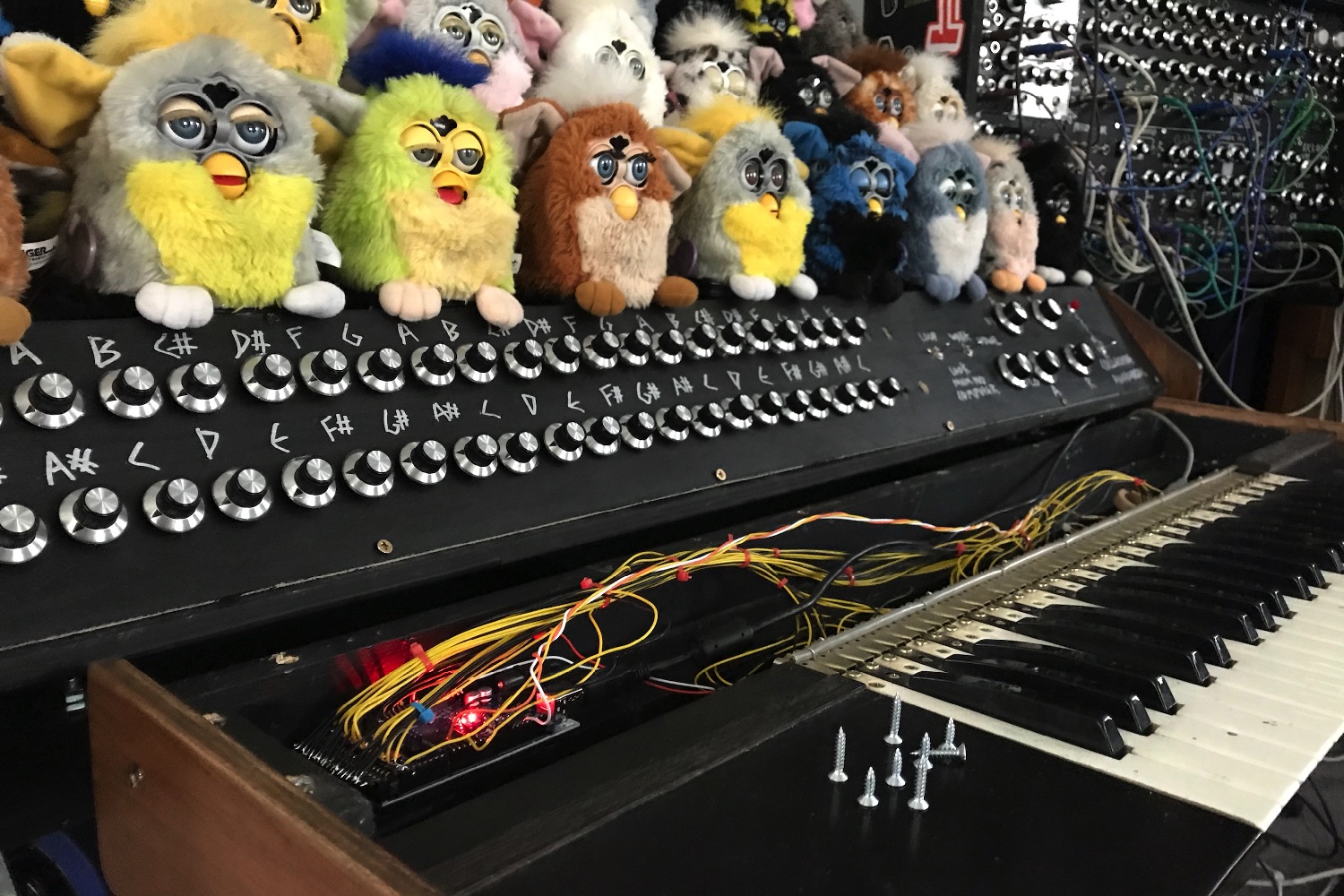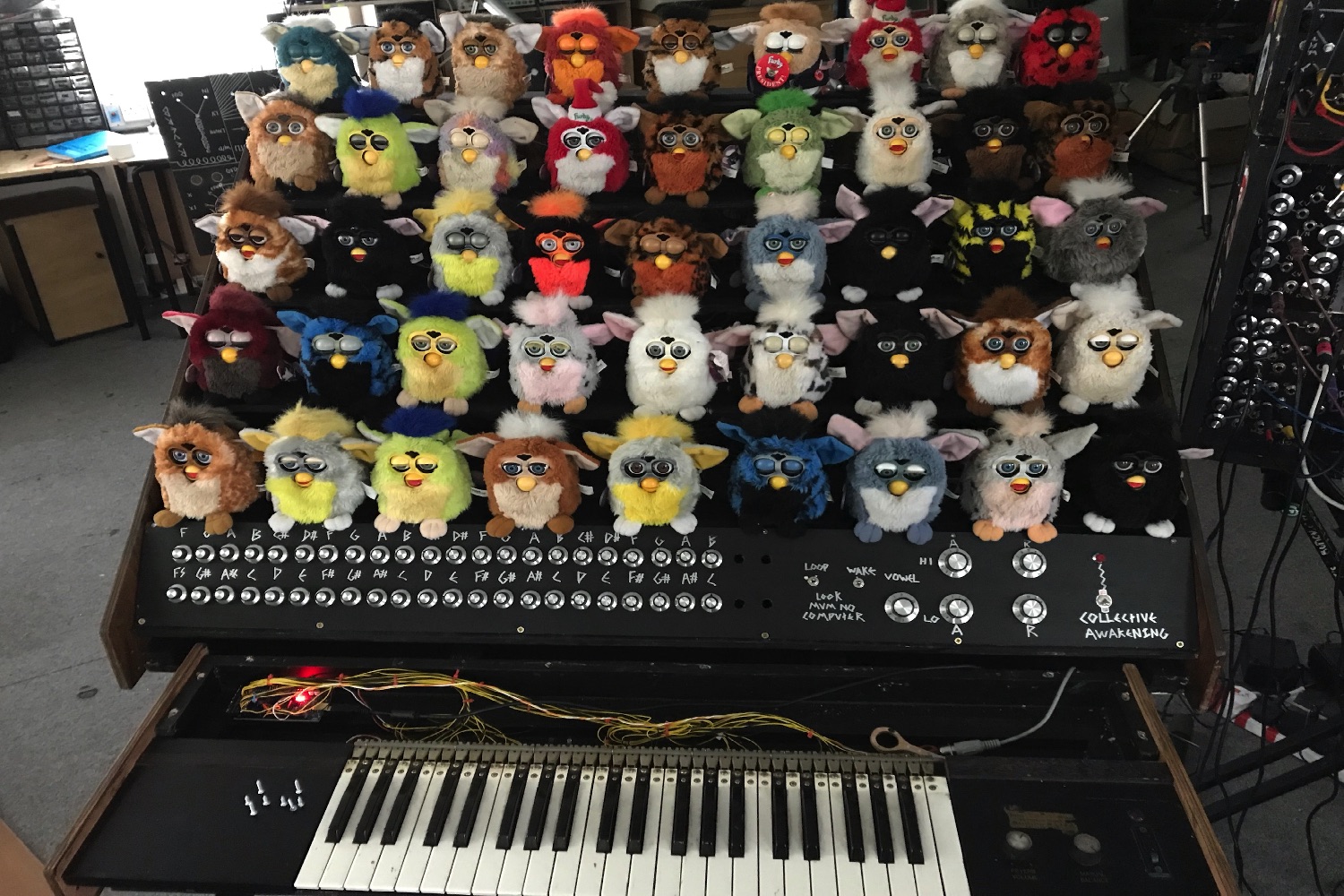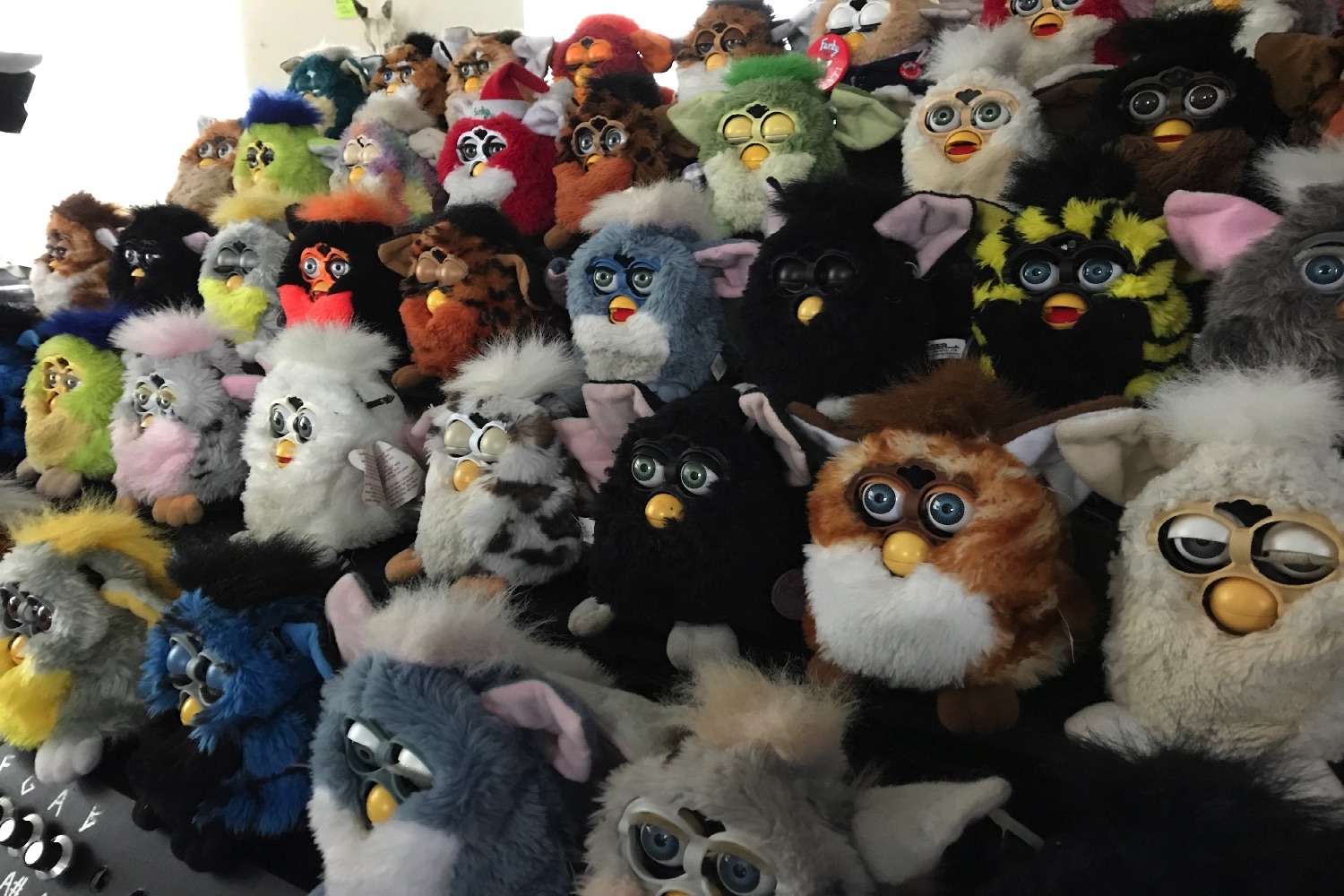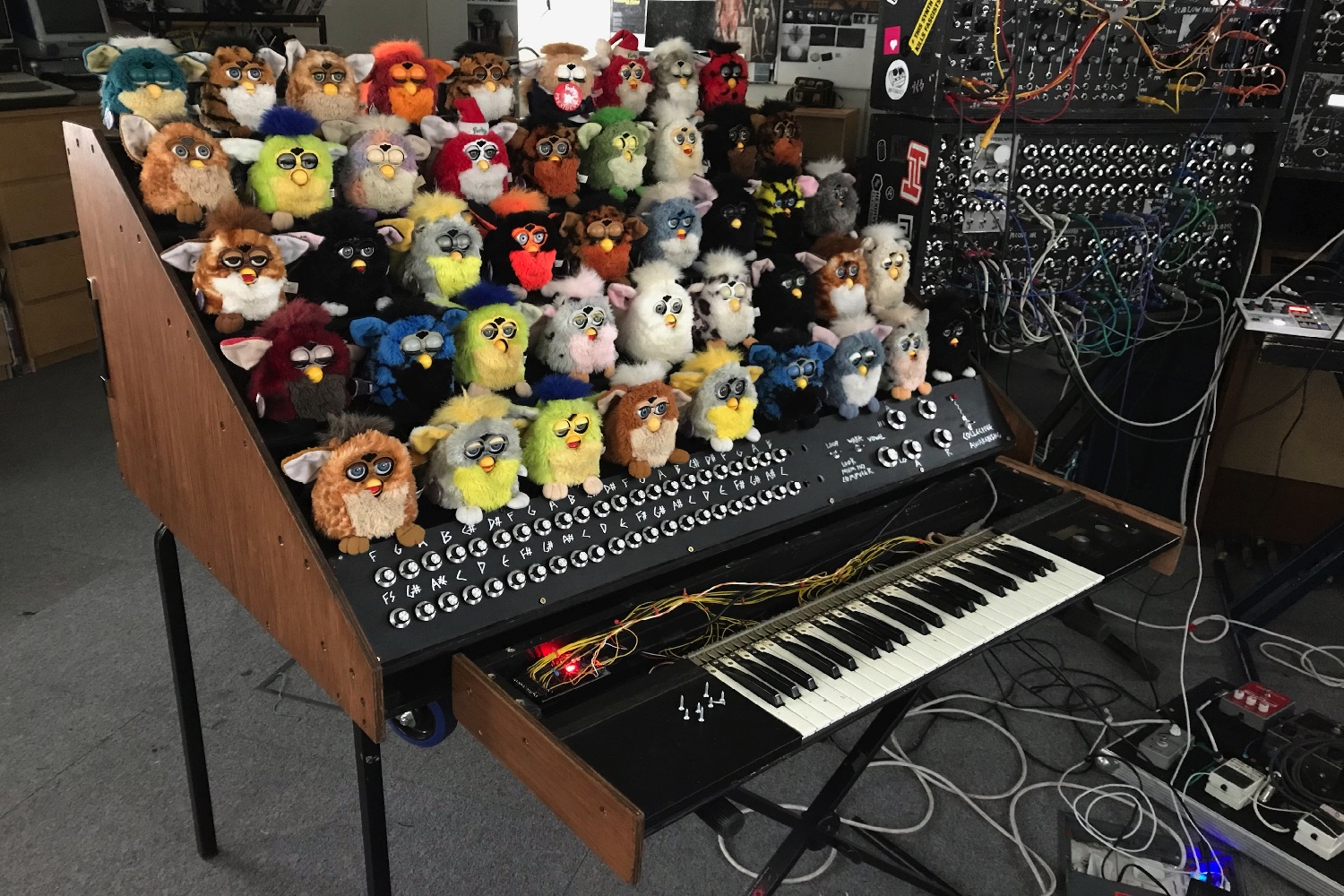We’ve covered some pretty oddball musical instruments in our time at Digital Trends, but perhaps none weirder than this Furby Organ, which repurposes the “must-have” robot toy of the late 1990s to form a nightmarish choir.
“The Furby Organ is a musical machine made from Furby souls,” its creator, U.K.-based synth scientist and YouTuber Sam “Look Mum No Computer” Battle, told Digital Trends. “The Furbies gave me their consent to build them into a purpose-built organ machine, with each Furby assigned a musical note on the keyboard. Think of it as a Furby retirement home, but where the Furbies have to work for their supper.”
Okay, so that’s a fairly offbeat way of describing the instrument (although perhaps no more strange than one would expect from a man who has built a music machine made of furry bird-like creatures), but it does explain a bit about how it functions.
Seizing upon the synthesized chatter aspect of the Furby, Battle’s ingenious concept involves linking the creatures up to a MIDI keyboard that lets him control their chatter and movement. There’s the ability to loop sound, 45 tone controls for each Furby note output, knobs for changing the individual vowel sounds, and more. It’s all kinds of bizarre, but all kinds of brilliant, too.
“I came up with the idea a good six or seven years ago,” Battle said. “I was modifying Furbies for a few years. I bought a ton of Furbies, but I didn’t have the technical know-how, so the plans laid dormant for a few years. I found myself mentioning to people about this Furby Organ, but whenever I mentioned it, I felt like a dreamer with an empty idea, which got on my nerves. So this New Year’s Eve, I made a resolution to finish this idea. After four weeks of soldering and swearing at inanimate toys, the world has a Furby Organ!”
Sadly, it may well remain the world’s only Furby Organ. That’s because Battle is hanging up his gloves as a Furby instrument maker. “The Furby Organ is done, case closed,” he said. “The joke is on whoever is going to have to sort through all my crap after I conk it. Who the hell is going to want this creepy monstrosity of an end-of-days machine in their living room, staring them in their face?”
We’re guessing the answer may prove to be a few more folks than he might expect.







